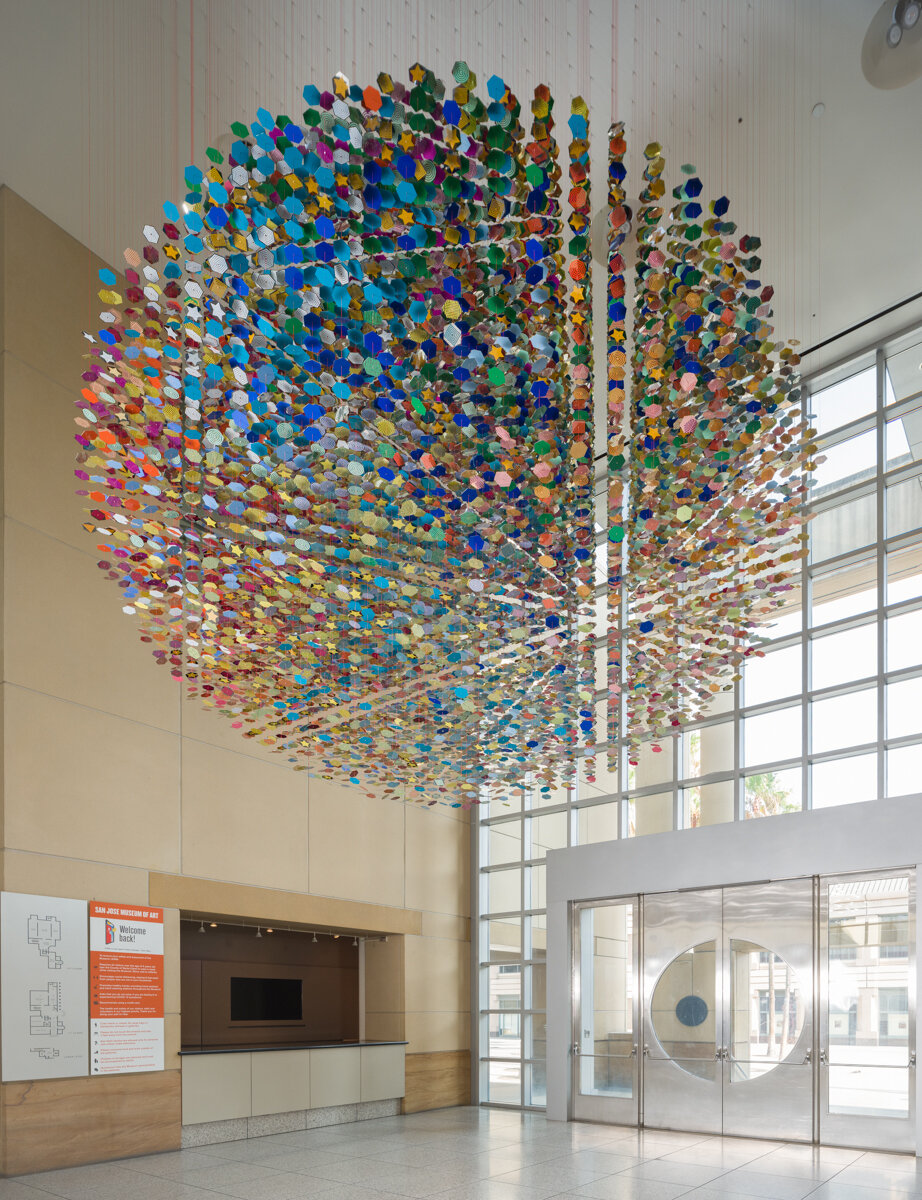SUPERFLEX | designboom | by Kat Barandy
Image: César Béjar
wrapped in a colorful facade by SUPERFLEX, stone manufacturer ARCA presents a design warehouse in wynwood, miami, with a gallery-like experience by esrawe studio. crossing through the vibrant exterior art piece, visitors enter a showroom collection of natural and technological materials and cultural activations. commissioned to imagine the arca’s new façade is danish artist group SUPERFLEX, three artists known for intersecting art, science, and activism. the facade, entitled ‘like a force of nature,’ is comprised of arca’s ceramic tiles designed by hector esrawe.
esrawe studio and SUPERFLEX work together to generate a facade installation that vibrantly expresses fibonacci sequence patterning along the ARCA miami warehouse. following a color palette inspired by the tones of banknotes, the work of art underlines the overwhelming experience of the world’s current economic systems as natural as volcanoes or tsunamis, almost like a force of nature. hector esrawe comments: ‘unlike its colorful façade, the interior is designed as a neutral space to shift the focus onto the material collections. ARCA wynwood is presented as a museum-grade experience where the materials are showcased as unique works of nature, creating an opportunity for visitors to have an interactive, sensory experience with ARCA’s products.’
ARCA’s miami warehouse is conceptually designed by esrawe studio and SUPERFLEX to shift away from traditional retail space. instead, the project promotes learning, stimulates dialogue and knowledge, and offers an understanding of why and how architecture, design, art, and culture are generated worldwide. this is accomplished with the dual-purpose design of showcasing the materials for experience and ease of purchase.
on the ground floor of ARCA’s miami showroom, visitors are presented with a visual experience. videos of the quarries arca sources for its stone, processes it maintains and other sources of inspiration or creation of materials is projected at reception. in the double-height stone gallery, a curated display of massive slabs of marble sourced from around the world are presented. each slab on display is available for purchase, where an indoor crane will reach down and help the customer select the exact piece. the second floor offers a journey through the evolution of materials, from natural wood to manufactured wood, ceramics, tile and porcelain, with a room dedicated to each.

















